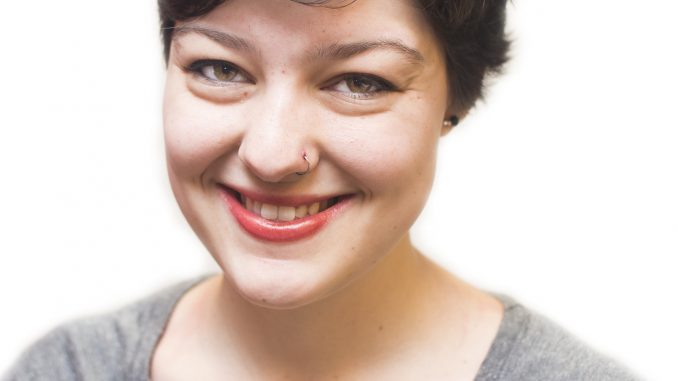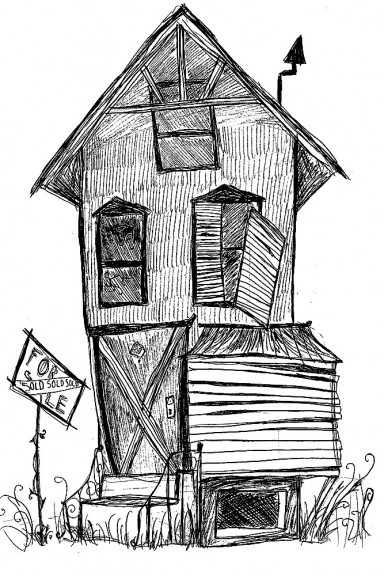

Green space is invaluable to Temple students. In fact, according to a September report from University Communications, it’s the second most discussed topic on Visualize Temple, a forum introduced by the university to encourage students to suggest their own ideas for change.
Temple appeared to have listened to this request. In the spring, the university plans to tear down the abandoned buildings it purchased in 2009 on the 1500 block of North Broad Street, along with the former MAB Paints store at Broad and Diamond streets.
“We did an evaluation of their use and condition,” James Creedon, the senior vice president for construction, facilities and operations, said of the buildings. “They had some structural problems and we thought it would be best to demolish them.”
Instead, he said the lots would be used for grass and benches — places for Temple students and North Philadelphia residents alike to relax and unwind.
“[We’re] making sure that we’re managing our property properly,” Creedon added. “No barbed wire fences. It’s not just an old building. It’s not an ugly lot. There’s something there.”
However, Creedon said this project is not a response to the requests of students on Visualize Temple.
“We’re getting a lot of good information from Visualize, [but] most of the conversation is about making the green space in the middle of campus bigger,” Creedon said.
Most of the properties the university bought are on the edge of campus and are being used as interim open space until Temple decides what to do with the land.
“But it may very well stay there,” Creedon added. “It’s more about being a good neighbor.”
The only business that will be left on the west side of Broad and Oxford streets is Zavelle Bookstore, which is independent from the university.
Zavelle employees had no idea about Temple’s construction plan.
“I didn’t know that they were going to be demolishing these buildings,” said Jacob Moats, a senior psychology major and employee at Zavelle.
“Turning this into a green space is a double-edged sword,” he said. “Even if they are offering a nice environment for everybody to use in the community, they’re also holding a monopoly over North Philadelphia.”
“I think it’s the best thing Temple can do,” Moats added.
But what if a company other than Temple tried to buy out the land? Moats said a representative from Ralph Lauren proposed purchasing the abandoned buildings and using the properties for clothing shops.
“He goes, ‘I wanted to know if I could purchase all of this, who can I talk to about that?’” Moats said. “’We’re like, ‘You’re going to have to go Temple.’”
In this case, Temple’s monopoly seems to be working in the students’ favor. Green space is clearly preferable to stores that are unaffordable for most college students.
But, lest we forget, these properties may not be green space for long. Although it is smart of Temple to initially utilize the space in a way that will please both students and the community, this project can easily turn into more student housing, and thus more gentrification.
Gentrification is the process of restoring deteriorating buildings or areas and selling them at higher prices, driving poorer residents out and middle class ones in. In this case, the middle class residents in question are Temple students. Simply owning these buildings already contributes to gentrification because nobody besides Temple can use the property. However, turning the lots into designated green spaces could undo this action and make the land accessible for everyone.
If we are to listen to Creedon’s claim that this project is about being a good neighbor, then we can only hope this land remains green or is turned into another asset to the community, such as a public library or gym. Otherwise, the land becomes a mere placeholder for Temple’s growing monopoly on the area.
All members of the community need to be good neighbors, but what does “being a good neighbor” mean? For students, it could mean picking up our trash and being polite to the people who live in the area. But for Temple, it involves actions on a much larger scale. Right now, how Temple uses this land is the most immediate issue.
The fact that this construction project has little to do with suggestions made by students makes the outlook seem bleak. If they didn’t listen to our opinions then, will they listen to us now when we say we want the new space to stay green?
If the area turns into more housing or retail space, it may begin to appear that Temple wants to do what is best for the university, not necessarily the students. That would be unfortunate, because we are much of the reason why the university exists in the first place.
Either way, students can look forward to enjoying green space within this academic year. And if we are vocal enough, we can keep it that way. After all, that’s why Visualize Temple was instated to begin with.
Grace Holleran can be reached at grace.elizabeth.holleran@temple.edu or on Twitter @coupsdegrace.



Be the first to comment